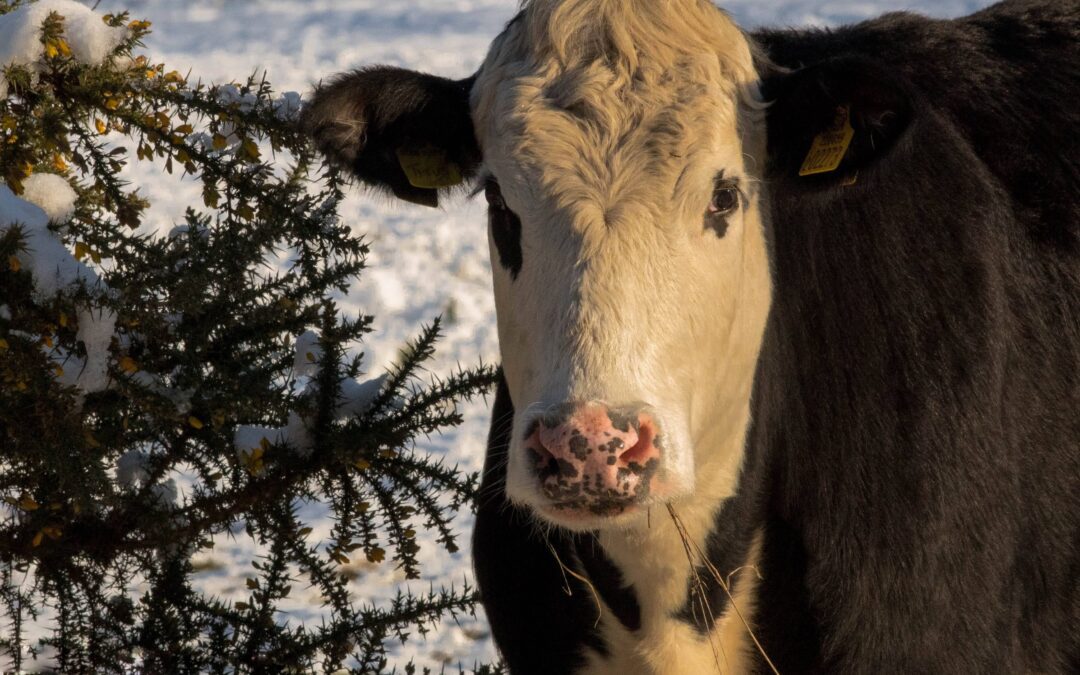Newsletter Topics:
- Management of open/late bred cattle
- Body condition score
- Protein and energy supplementation
Our goal at Bear Paw Veterinary Service is to help you, as producers, be as profitable as possible with your cattle business. Profitability comes from two main factors: herd/calf health and herd reproductive efficiency. I recognize that there are many more factors at play in your operation, but these two can impact your herd most from a veterinary standpoint. We can’t control mother nature, range conditions, and hay prices, but we can help you to maintain a healthy herd and maximize reproductive efficiency.
Open/Late Bred Cattle:
A question I routinely get as I’m out in the country preg checking herds is, “How have preg rates been this year?” This is a loaded question as it all depends on herd/nutrition management. I have noted a higher percentage of open and late bred cattle the past couple of fall seasons within herds. I also note many herds’ bull exposure getting longer, and calving seasons becoming longer and more strung out. This should be minimized as it takes more labor input costs to calve cows across an extended period, not to mention the toll it takes on you all mentally and physically.
To mitigate these issues, I recommend culling all open cattle at pregnancy diagnosis. It really is difficult to justify carrying an open cow through a production year. She takes a lot of input and yields no return. The other consideration with open cattle is to question why she is open. She had exposure to the bull like everyone else, and thus open cattle can perpetuate infertility. Open cattle need to be culled.
Late bred cattle can be managed differently. I always ask for a calving cutoff at preg check time. This is so I can identify any cows that are bred to calve later than this date. The other consideration in this is when bulls will be turned out the following year. March calving means late May/Early June bull turnout. A cow that calves late May/early June will not breed back for 45-60 days, thus the last cycle of bull turnout (60-day breeding). These late bred cattle will continue to be late bred and string out calving. CIDRs can be used in these cattle to attempt to cycle them to breed earlier (i.e., 2nd or early 3rd breeding cycle). This management tool can be discussed individually if desired.
Body Condition Score:
For a general refresher on BCS, please refer to the linked article at the bottom of this newsletter. At the time of pregnancy diagnosis, we always body condition score (BCS) the cattle coming through the chute. This is to be utilized in your management considerations. Ideal BCS at calving is 5-6/9. In order for a cow to move up one BCS, she must gain 80 pounds of body weight.
In the northern part of the US, fall preg check is a difficult time to achieve increases in BCS as we head into supplemental feeding (i.e., hay), and the cow is putting a lot of resources toward calf growth. If you have a herd average that is less than the ideal BCS, this should trigger a feed management review. Hay test results are paramount to achieving adequate late fall/winter nutrition. Without a reliable hay test, we are simply guessing, and that usually doesn’t pay off in the end. If we have hay test results and they are not adequate for our cattle’s needs, we have to consider supplementation options. For information or help with hay testing, please contact us or our county extension office.
Protein/Energy/Mineral Supplementation:
As forages mature, their crude protein supply generally decreases. An inadequate supply of protein limits forage digestibility and decreases energy intake. This means our fall and/or drought range and hay are lower than our summer range. Protein supplement options are numerous and include range cakes, grain mixes (be careful), blocks, tubs, or additional natural high protein forages. I won’t pretend to know all the ins and outs of all the options out there. These supplements need to be tailored to your operation’s needs and ability to deliver. Know that not all protein is created equal, and thus consultation with us and our friends in the extension office can help formulate an adequate winter feed supplement plan.
Mineral is equally as important to a winter feeding plan. Many minerals play vital roles in reproduction and maintenance of pregnancy, calf development, and the immunity a calf will attain from the cow’s colostrum. Like protein, not all minerals are created equal, and it’s necessary to work with a chelated mineral source. Likewise, some minerals are attained through forage and soil, and thus we need to watch the levels in our supplements. Call us for help in determining an appropriate mineral plan for your herd.
As we head through the final month of 2023, we wish you all a Merry Christmas and a Happy New Year. Please reach out if there are any questions that arise as you consider your winter cow-calf management plans. Here’s to a productive and profitable new year.
Sincerely, Dr. Mike Whitmore, DVM.
Dr. Paul McCann, DVM & your Bear Paw Veterinary Service team

